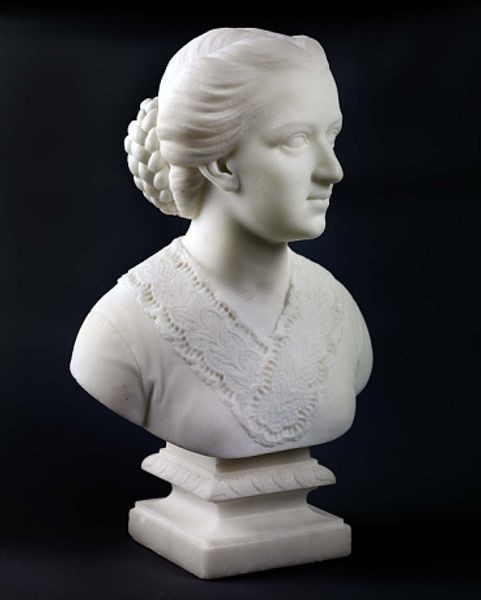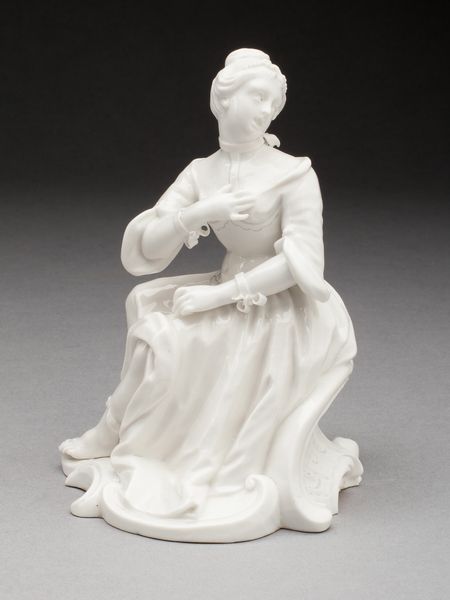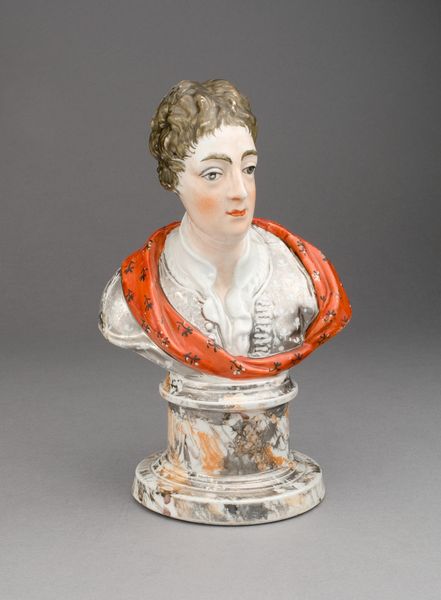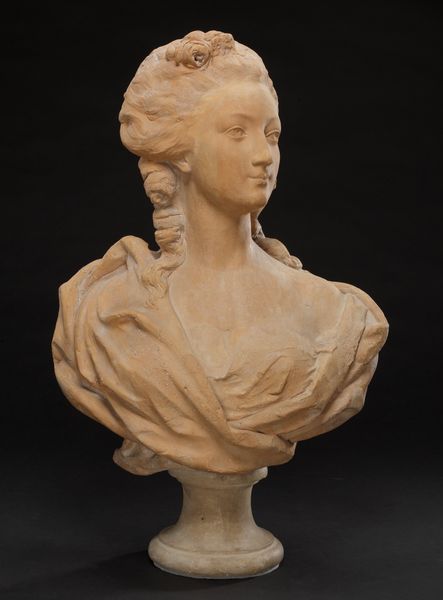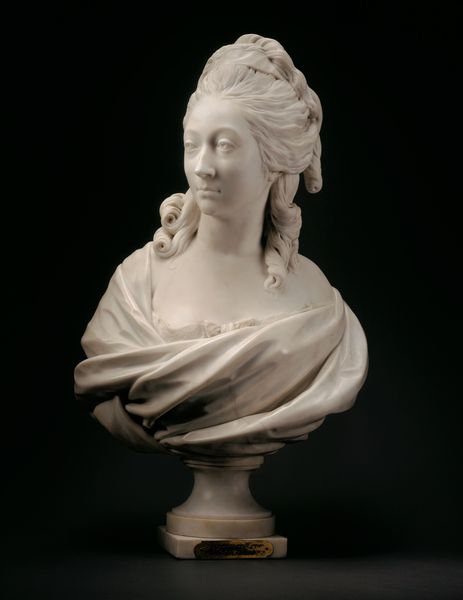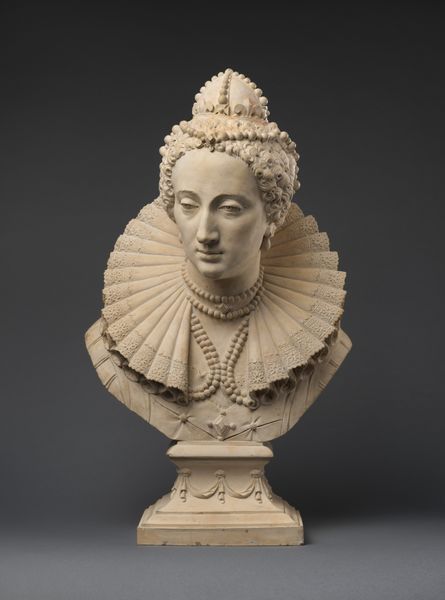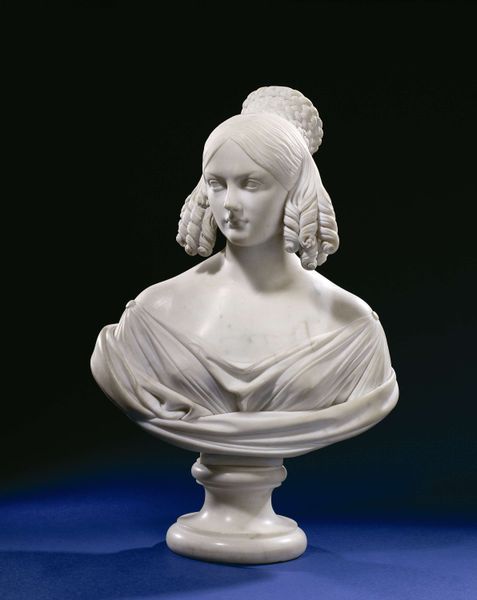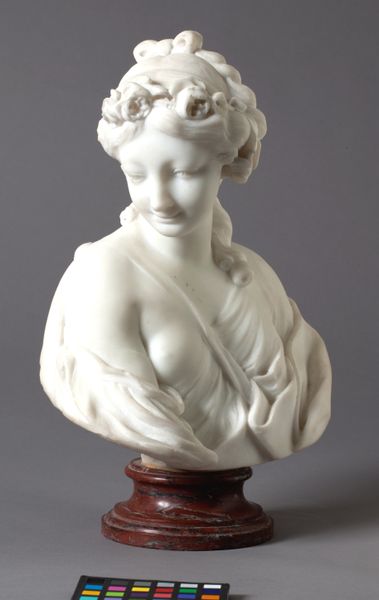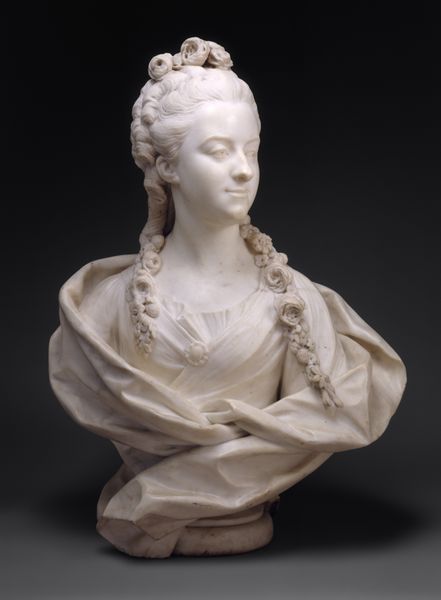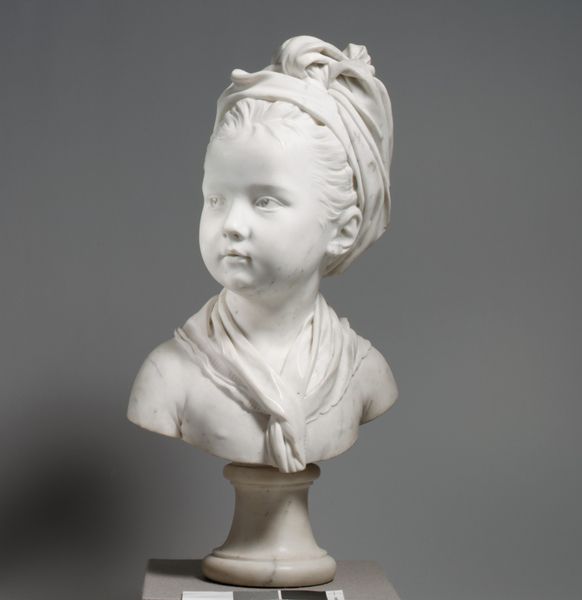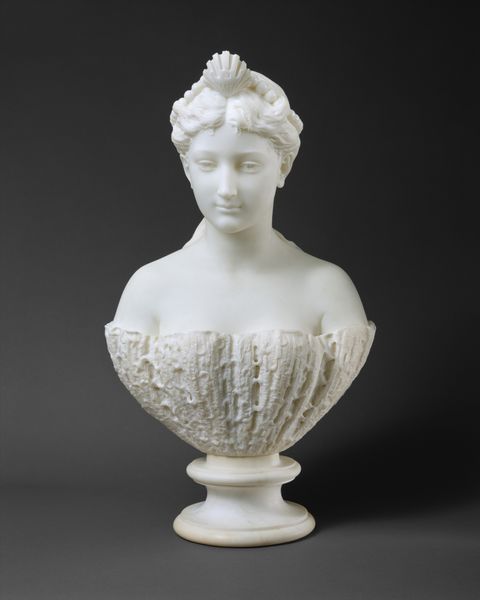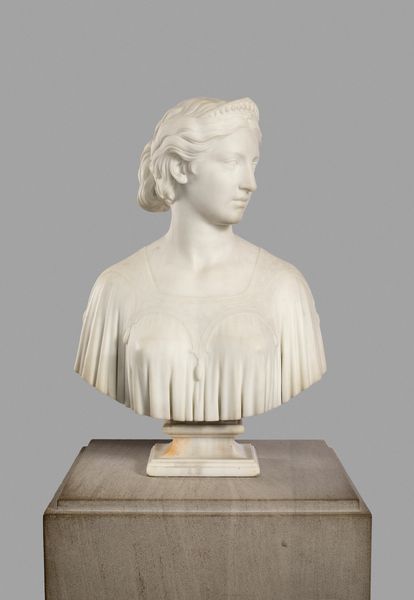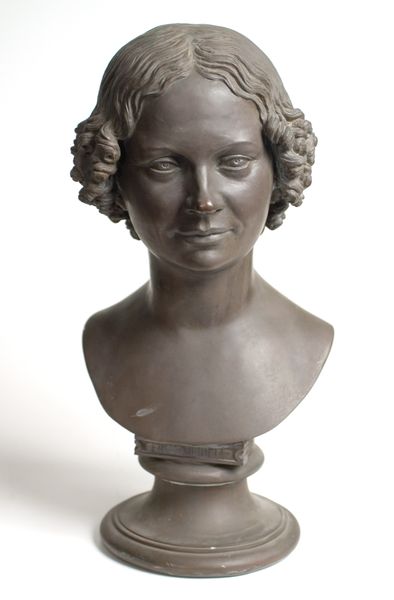
ceramic, sculpture
#
portrait
#
ceramic
#
sculpture
#
15_18th-century
#
decorative-art
#
italian-renaissance
#
rococo
Dimensions: Height: 13 1/16 in. (33.2 cm)
Copyright: Public Domain
Editor: Here we have "Bust of a Spanish nobleman" crafted between 1745 and 1755 by the Alcora Manufactory. It's a striking ceramic sculpture. What initially grabs me is the almost clinical whiteness of it, offset by the ornate details. What strikes you most about this piece? Curator: The interesting thing is the performance of power and status encoded within a 'decorative' object. These porcelain sculptures became very popular, displayed within homes as markers of status. So, how does this function to reinforce nobility in Spain? Editor: In what way exactly does it reinforce the idea of nobility? Is it the very material, being porcelain, and thus, inherently precious? Curator: Exactly. Think of the rise of porcelain manufacture in Europe, specifically the desire to emulate Chinese porcelain. Alcora and other manufacturers tapped into this craving. Owning such an object signified wealth and, therefore, power. Add to this the careful detailing of dress and the aristocratic pose - notice the averted gaze? Editor: That makes perfect sense. The averted gaze and ruffled detailing serve as further social signifiers, reinforcing this person's noble status. Are the number of ruffles potentially another expression of high rank? Curator: Absolutely. Every detail in art, particularly portraits like these, reinforces this power structure, perpetuating social hierarchies in a very visible way. It shows art’s inherent connection to the wider society. Editor: That's given me so much to consider – the politics embedded in decorative art is more overt than I first realised! Curator: Indeed! The placement and viewing context give so much additional insight. There is nothing "mere" about decorations.
Comments
No comments
Be the first to comment and join the conversation on the ultimate creative platform.
